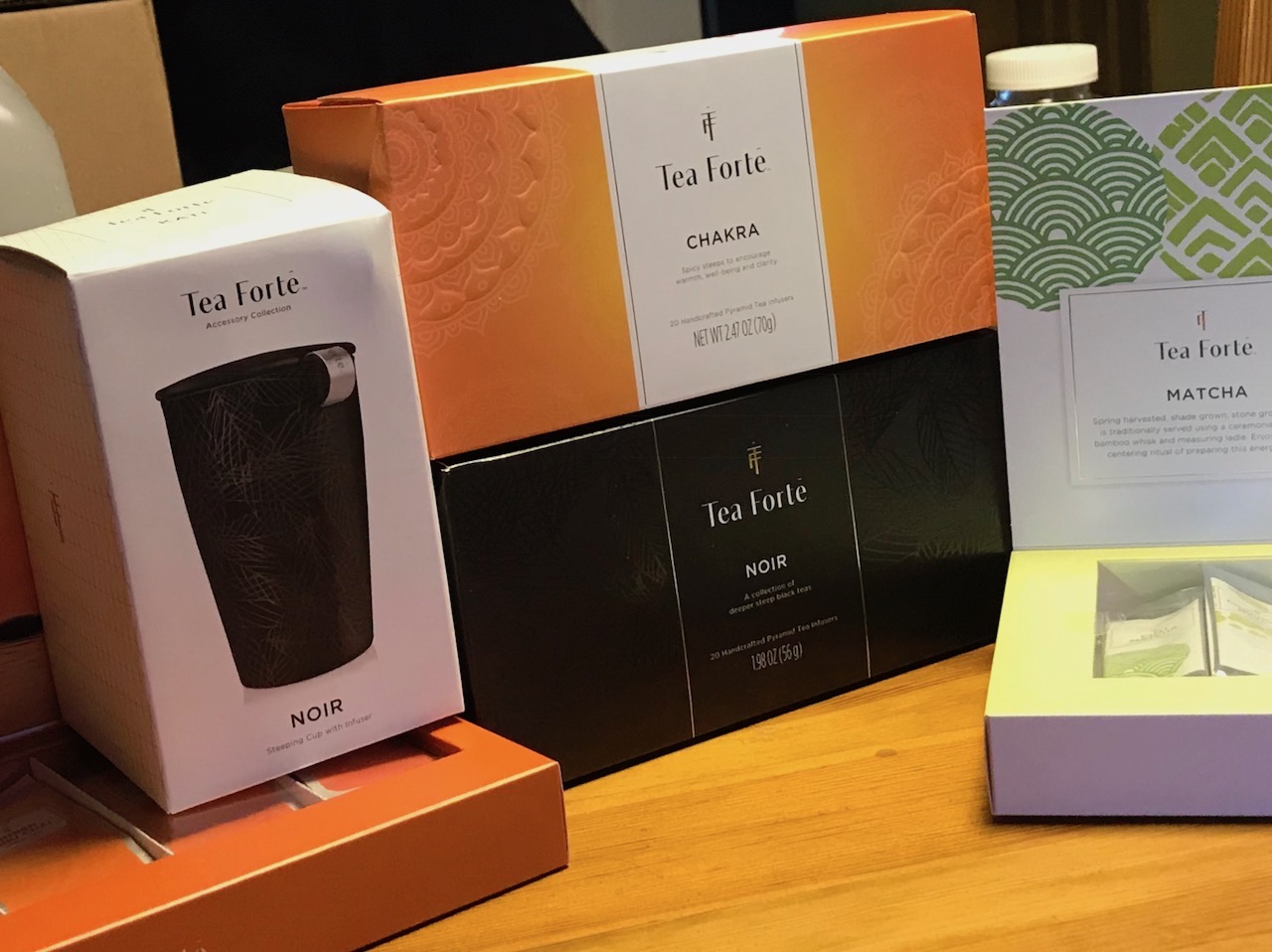Tea Forté’s world in a teacup
I fell in love with tea –and chanoyu, the formal Japanese tea ceremony– after reading James Clavell’s bestselling novel, “Shogun,” about an English pilot who arrived in Japan in the 1600s.
Here was a tea that had nothing to do with my Midwestern background of Lipton tea bag tossed into a cup of scalding water. Nothing wrong with that kind of tea.
But in Shogun, tea stopped time–in one chapter, two enemies set aside their enmity to engage in a tea ceremony of several hours.
I was so taken by the stillness and one-pointedness of this activity that for several years, every Saturday, I traveled to a Washington, D.C. suburb to kneel in a tatami -covered room for an hour-long lesson in the choreographed art of the Urasenke tea ceremony.
In matcha, the powdered green tea of the tea ceremony, I was introduced to a brand-new world of tea.
So, I was intrigued by Tea Forté’s single steep matcha teas. The 1.32 oz box offers 15 individual packets of matcha, not just the traditional plain green tea, but flavored offerings like chai matcha, chocolate matcha, coconut, and ginger matcha.
Over several days I tried each and found a favorite in the ginger matcha. Unlike tea ceremony matcha, whipped to a froth with a bamboo whisk, these teas are flatter but instantly available to drink by just adding boiling water.
You have all the benefits of green tea’s antioxidants and nutrients without bending a knee.
Beautifully packaged, these matchas are a perfect introduction for beginning green tea drinkers who may be initially put off by the astringent notes of more traditional green teas.
Tea Forté also offers its Chakra spicy black and herbal teas reminding me of a bus and train trip through East Africa where I first came across “chai” – the Indian name for tea and, in this case, the spicy, black tea, often sweetened and long-steeped in milk that originated in India and is sometimes called Masala chai.
We’d planned the train trip from Nairobi, Kenya’s capital, to Mombasa on the coast of the Indian Ocean, and then a bus down the coast to Dar es Salaam and Zanzibar in Tanzania.
Only it didn’t.
The train, packed with Kenyans of all ethnicities—Kikuyus and Masai, Indians, Arabs, Shihiri traders from Yemen—stopped halfway through the journey.
It stopped, and it stayed stopped.
Instantly, Kenyan youths carrying sandwiches and swinging buckets swarmed alongside the halted train, yelling “chai, chai, chai.”
Ladies in saris reached out the windows with coins and cups for this unknown chai, which after two hours of stillness in a hot car full of sweaty bodies, I, too, was game to try, all thoughts of cleanliness and whether it was safe to drink gone.
The chai was delicious– warm, sweet, milky and aromatic with floating bits of cinnamon bark, cloves, and cardamom seeds.
Tea Forté offers similarly heady brews, either in single steep servings ($20 for 15) or clever two-toned cardboard pyramids with a leaf tassel ($22 for 20).
Once again, Tea Forté provides a variety of flavors, enhanced like that long-ago chai tea, with different spices, ranging from cinnamon, cloves, and anise to black pepper, vanilla, ginger, cardamom, chicory, and turmeric.
The chai teas tap a world of different tea ranging from black teas to South America’s yerba mate to South Africa’s redbush, rooibos.
Again, Tea Forté’s Chakra teas are beautifully packaged. They are not cheap, though, but would make perfect gifts for friends and new acquaintances—an expression of the connection between people since “chakra” comes from the Sanskrit word meaning “wheel” or “circle”.
And after their heady flavors, an adventure in other cultures and tastes, you can always come back home to a familiar cup of Lipton with a wider appreciation of the world of tea.

Karen DeWitt has a long distinguished career as a journalist, covering politics, but also has worked on political campaigns. She compares the later to the labor of a Hebrew working for the Pharaoh. She’s covered the White House and the national politics for The New York Times; foreign affairs and the White House for USA TODAY before joining that newspaper’s management as an assistant managing editor. She switched to television as a senior producer for ABC’s Nightline, where she wrote and produced the award-winning, Found Voices about the digitization of 1930s and 1940s interviews with former slaves. She returned to newspapers, as Washington editor for the Examiner newspaper and eventually left to help on local political campaigns. She has several blogs, but contributes mostly to a food blog called “I don’t speak cuisine” at peacecorpsworldwide.org and theroot.com.

